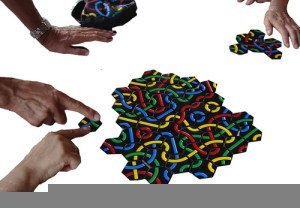By: Jordi G
What is knowledge management? Why is there a demand for knowledge management? These are two questions we will answer for you. With an understanding of knowledge management, you will be in a better position to be an organizational leader as you help your organization progress.
Knowledge is a resource that organizations attain through documents and information from people. Knowledge can include data, information, and knowledge. Data refers to precise numbers and figures that are quantifiable. Information takes data one step further by applying some type of organization. The third step, is the formulation of information by adding a context, and this is called knowledge.
Knowledge comes in two forms explicit and tacit. Explicit refers to knowledge that is attainable through teaching. Tacit knowledge comes from experience and is subconscious knowledge since in many cases, you do not know you possess the knowledge. As a resource, leaders are able to control informational flow and implement a strategy for knowledge management.
Knowledge management was a term that came into the forefront around 1990. Prior to this date, few organizations had respect for knowledge to the point where a system was in place to record data and information. Capitalizing on knowledge management allows business leaders to leverage this knowledge asset across the organization.
Knowledge management is particularly useful in research and development. This area within the company benefits information about past projects allowing them to identify new opportunities by leveraging competitive strengths while avoid pitfalls from the last projects, especially those that were unsuccessful. Ultimately, knowledge management helps to reduce the gap between what is possible and what is realistic.
Development Stages
Part One: Knowledge Storage Platform
Knowledge management requires a platform to host the information. One type of platform applicable in this task is the establishment of an intranet. Utilizing this platform, we can move beyond simply stating different practical nuggets of data and information regarding the order of operations. We can use directions to identify key takeaways that may be beneficial in the future. These key takeaways become organizational knowledge.
Part Two: Support Network
Possessing the infrastructure to capture knowledge is one ingredient in the recipe. Training team members on how to leverage this knowledge is vital to the application of existing knowledge. Because team members require training and development to navigate the system that is in place but also awareness for opportunities to apply this knowledge it becomes a function of human resources.
As a leader, you cannot simply put systems in place and expect them to provide value. Instead, you need to incorporate these systems into the culture within the organization. Knowledge management is a resource that can be beneficial to employees when lessons can be applied from previous experiences.
As leaders, we need to welcome the possibility of using existing knowledge daily. Knowledge management requires communication by sharing knowledge as well as receiving knowledge. In this fashion, these systems become a social environment or community for those individuals on the team.
Part Three Creating a User Friendly System
What would make a community member use a system routinely to acquire knowledge? The system must contain two elements of search. First, the system must be easy to use and welcoming. A system that is easy to use will encourage members to participate and engage with its use. Second, the system must deliver results that have a high degree of validity to the search prompt. Even if a system is user friendly, a system that does not provide reliable and relevant results will be of little to no use. For this reason, content management must have ease of access and generate results with a high degree of relevancy. If knowledge is not easy to attain, users not frequent the system or stop looking soon after beginning the search.
Types of Systems
Software or Technology-Based System
By: Shaun Fisher
These systems are built using technology and allows users to add or edit contributions. Technology systems require a person to serve as project manager and record information.
Soft Systems
Typically, these soft systems are networking opportunities for team members. As such, knowledge sharing occurs through meetings, mentoring, or training. One advantage of offering a soft system is the transference of tacit knowledge.
People have different styles of learning. Therefore, leaders can provide value to team members by offering both technology-based systems and soft systems. Implementing both types of systems creates potential for members to absorb organization knowledge based on the preferential learning method.
Value of Knowledge Management
Why should leaders pursue the implementation of knowledge management? Knowledge management offers specific value about important organizational tasks. There are some general benefits of knowledge management.
First, knowledge management offers continuation of practices important to organizational success. There are a number of reasons why a team member may leave the team, including vacation, retirement, professional change, or termination.
Second, these types of systems can help leaders increase savings. One way to increase savings is by reducing costs leading to financial gains. Additionally, managing knowledge can increase organizational efficiency because of time saving.
Third, knowledge management improves team morale by the development of relationships. As member’s share and receive knowledge, they increase their sense of belonging. As members implement ideas and experience success, they also build trust among their peers.
Fourth, by sharing ideas between members, there is an opportunity for innovative solutions as members continue to share the ideas that are helpful or possess limitation. Moreover, the vast experience of members offers a diverse perspective that helps to contribute to the notion to the master mind.
Fifth, as members learn from one another, they identify manners that are helpful to completion of their responsibilities at higher levels. Ultimately, knowledge management allows members to perform at increasing levels.


